Eber’s water towers 2006
The leading trade journal in Sweden, VA-tidskriften Cirkulation has since 1998 an article series under the heading Ebers vattentorn (Eber’s water towers), where Eber Ohlsson with text and photo presents interesting water towers in the world (except Scania and Sweden). Below is a free translation to English of these texts.
Eber’s water towers in Cirkulation 1/2006

A free translation to English:
Château d’eau, the French word for water tower is the famous construction called that stands in Montpellier, a city in the south France. In our nomenclature should the tower instead be called ground reservoir. The water reservoir, located on the city’s highest point, is underneath the magnificent hexagonal temple superstructure with it’s Corinthian capital from 1768, drawn by architect Jean Antoine Giral.
From the river Lez was the water let to the reservoir on an aqueduct that is 880 m long and 22 m high, and inspired by the little more north located famous Roman aqueduct Pont du Gard.
Published 2006-02-08
Eber’s water towers in Cirkulation 2/2006
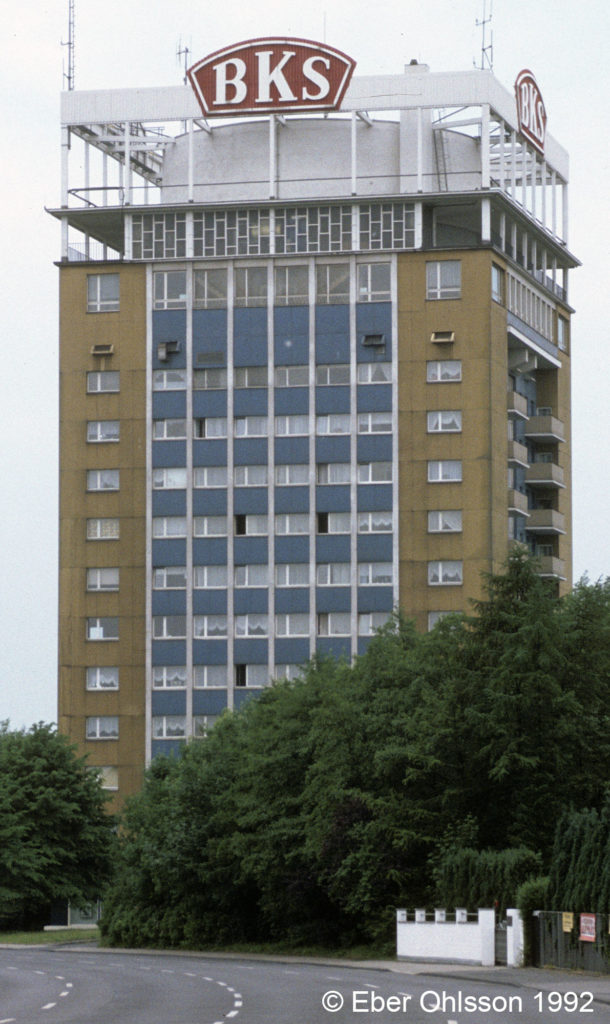
A free translation to English:
Water damages in dwelling-houses are a growing problem according to the insurance statistics. Seeing that it around the world is a lot of buildings that combine dwellings with a water reservoir would these houses according to the logic run a bigger risk to get damages. These risks would not at least touch Germany with its many dwelling-houses with water reservoirs on the top.
In Velbert, a German town between the rivers Ruhr and Wupper was it built a water tower of this type in the year 1957. On the top of the house is there a 10 m high reservoir in pre-stressed reinforced concrete with a volume on total 3 000 m³ water. It is many drops of water that strive down.
Published 2006-03-15
Eber’s water towers in Cirkulation 3/2006

A free translation to English:
In the northern part of the Gulf of Bothnia is the Finnish town Kemi situated. Here was 1939-42 a 52 m and 14 storied high town hall built, drawn by Bertel Strömmer, with two reservoirs of total 500 m³ in the upper part of the house. After the peace between Finland and the Soviet Union 1944 became the German forced to retreat northbound and destroyed much under there’s retreat. In Kemi blasted they a three storied big hole in the town hall which nevertheless was still standing and could be repaired and extended 1945.
A new enlargement of the town hall, drawn by Aarne Ervi, was done 1965-69, and at that time three new cistern was added, so that the total volume of the five reservoirs was 2 500 m³.
Published 2006-04-26
Eber’s water towers in Cirkulation 4/2006

The Swedish national football team was stationed in Bremen under the World Championship 2006, the same month as this article was published.
A free translation to English:
The river Weser flow through the old free German Hanseatic town Bremen, with the football arena Weserstadion on the right bank and the city’s oldest water tower on the left bank. The 47 meter high tower in red bricks and cornices of sandstone, four octagonal corner-towers, two cisterns on total 1 700 cubic metres and below pumps operated by steam engines, stood clear 1873 and are drawn by Fr. R. Th. Berg and J. G. Poppe.
In one corner-tower was there a chimney, in two towers inlet and outlet pipes and in the fourth tower a staircase. The tower was hit by a bomb under the last war, but is today restored, declared as a monument and in duty.
Published 2006-06-07
Eber’s water towers in Cirkulation 5/2006
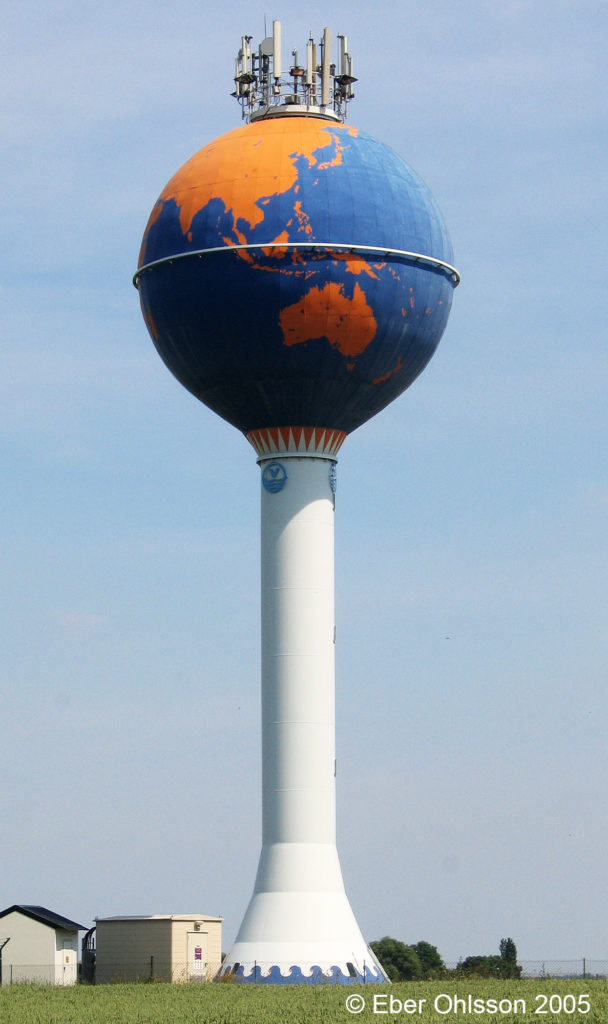
The Swedish word “tankar” can mean both tanks and thoughts.
A free translation to English:
Some tanks/thoughts are global. It seems even to be valid for water-tanks/water-thoughts. When there are many spherical steel water towers in the world, the thought to paint the tank as a globe must spontaneous turn up at some persons, on more than one place on the globe. The Scanian place Bjärnum is one example; another is Bierbeek in the Belgian Flanders.
The 29 meter high water tower at Bierbeek, with a reservoir on 500 cubic meters, stood clear 1969. The year 1993 get it the global painting, which done the tower so well-known and popular, that it now has been the municipalities logo. A worth considering thought is that the tank till circa 70 percent is blue-painted, that part of the globe that is water.
Published 2006-08-23
Eber’s water towers in Cirkulation 6/2006
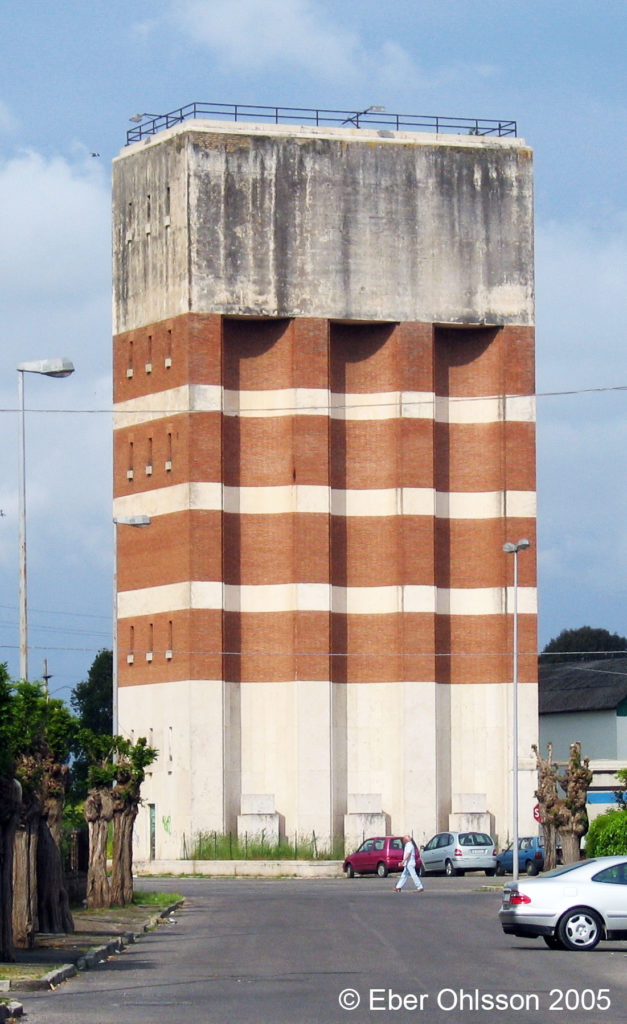
A free translation to English:
Agro Pontino is a region south of Rome that under the antique was an important agricultural district, but as later was changed to a swamp. Under 1920/1930-ies the area was drain of and restored to fertile ground. There became even new towns, as the 1935 founded Pontinia; there the water tower was one of the first buildings.
The town and the tower is works by the architect Oriolo Frezzotti and the engineer Alfredo Pappalardo. The nearly 29 m high tower in concrete has a reservoir on 180 m³, and a front there bricks put in layers with travertine. On three pedestals on the base of the tower should it stand statues, a project that however not comes off.
Published 2006-09-27
Eber’s water towers in Cirkulation 7/2006
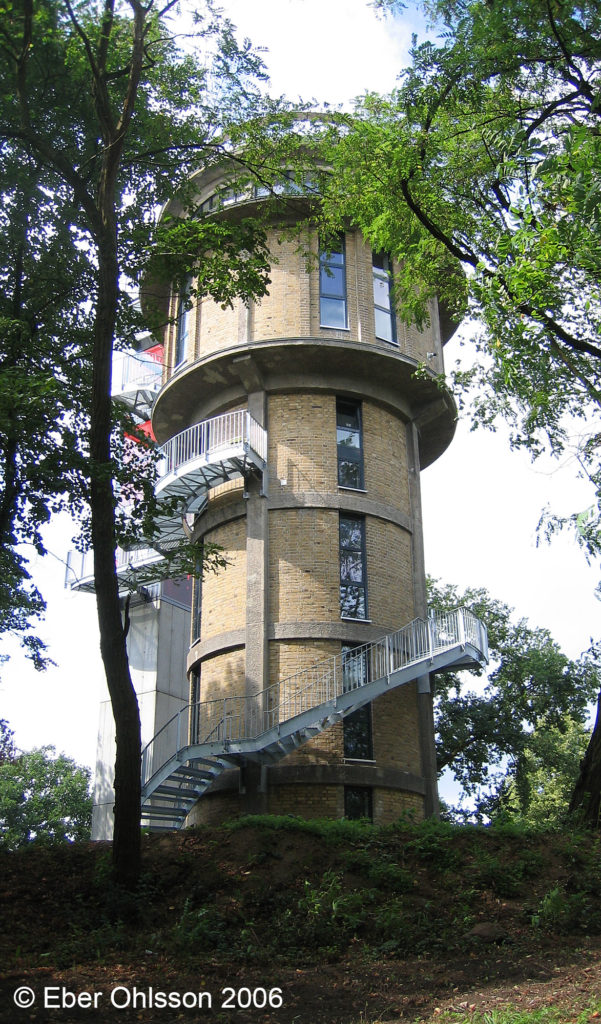
A free translation to English:
One advantage with water towers is the height. Exclusive of pressure in the pipes you also often get a 360 degrees view of the surrounding. Somewhat that is developed on the water tower in Joachimsthal, a small town 50 kilometres north of Berlin.
The tower was built 1960 and was out of operation 1990. It was discovered by the British artist and architect couple Sarah Phillips and Richard Hurding, who now have a 99-year leasehold of the monument protected building. With contribution from EU there has built an elevator tower beside the staircase surrounded tower, now a residence. Therefore can visitors today without charges have a look at the surrounded UNESCO designated biosphere national park.
Published 2006-11-08
Eber’s water towers in Cirkulation 8/2006
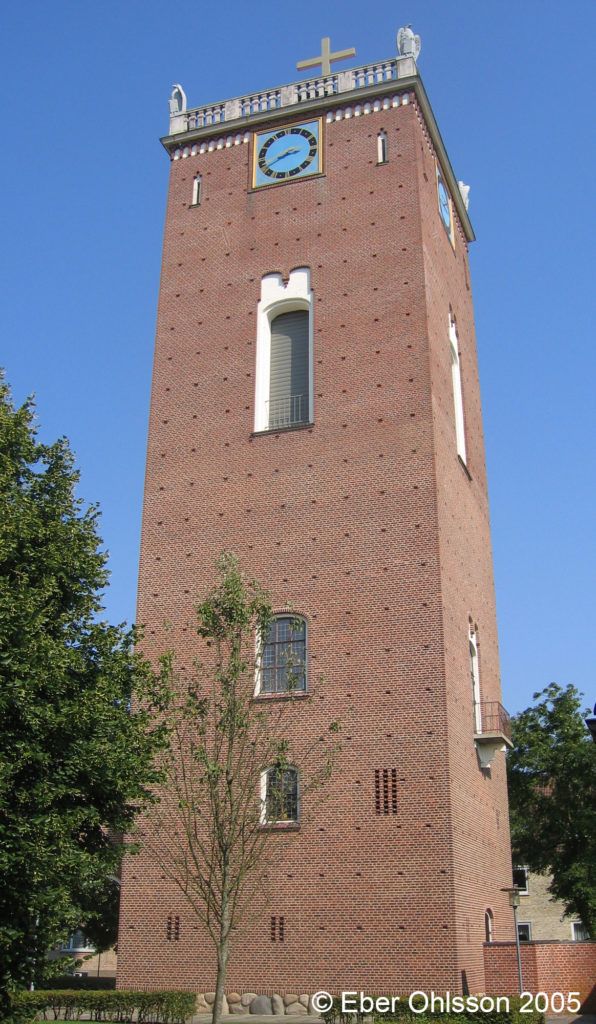
Småland is a region in Sweden, north of Scania.
A free translation to English:
The Western Jutland is a region in Denmark with lean soil, which has created rough conditions for the inhabitants. It has forced them to both economic and enterprising spirit. The similarity with the Småland is obvious, both when it concern the economic and the religious conditions.
The economy virtue came to an expression 1950, when Herning, a metropolis in the moor land, should build a new water tower, but even a new church. The potential of the savings was obvious if the water tower and the church tower could be combined. The tower of the church Saint John, designed by Öllegaard and Packness, contain therefore today a water reservoir of 400 m³.
Published 2006-12-13
